My first attempt at a guitar respray
(There’s a lot of scratting)The guitar I play most (and have always) is probably the least expensive guitar I own. It’s a Korean Westone Specrum 2 bought in about 1987 for £180.
Over the years I’ve bought another 2 of them hoping to at least have a spare. But neither of the two replacements measure up. After much messing around I realise it might be something as ridiculous as the colour.
The original is “hot pink”, which is to say it’s PIIIIIINNNNNKKKK!. Which in the 80’s was just the only viable colour for a superstrat. Every other colour might as well be beige.
The hex colour code for hot pink is FF-69-B4.
If you move those numbers around you can get Rizla Suzuki blue (69-B4-FF) which is usually called ‘Malibu’. I’ve always liked the colour, so I decided to go for that. Also some guy on EBay was selling a litre of it dirt cheap, and why not have two guitars in a neat colour palette.
Just for interest here’s a table of what you get when you move the hex numbers around. I think you’ll agree that this is the only viable colour palette for 80’s superstrats :
| Hex | Name |
| FF69B4 | Hot Pink |
| FFB469 | Koromiko |
| 69FFB4 | Aquamarine |
| B4FF69 | Green Yellow |
| B469FF | Heliotrope |
| 69B4FF | Malibu |
| A yellow that’s nearly right | |
| FFFF69 | Laser Lemon |
Before I continue a little disclaimer.
Do not under any circumstances take anything I say as true or useful, or even as advice. I am not a professional, I’m not a Luthier, I don’t really know what I’m doing. What I’ve done is probably what you’re doing right now. I searched the internet for tips on how to go about spraying a guitar.
I would say this… Don’t do this on any guitar you aren’t afraid to throw away. Don’t do it on any guitar that’s worth more than a hundred quid. Probably just don’t do it. Pay a professional.
So.. moving on..
Stripping the original paint
I think there are three basic methods of stripping paint. Abrasives, Chemicals and heat.
After a lot of research I decided to go with heat and it was a wise decision. Using a good heat gun you can strip a guitar down to the wood in less than an hour. There are some things to watch out for.
- Be careful not to gouge the wood with your ‘scratter’.
- Be careful not to burn the wood.
- Be careful not to set yourself, or anything else on fire
- Don’t breathe in the fumes if the guitar was made prior to 1980, it’ll probably contain lead.
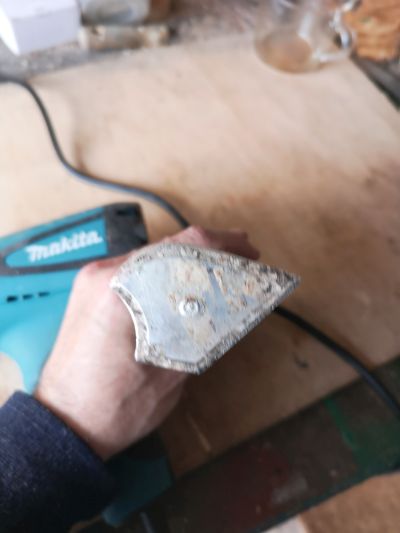

You can’t really tell but this video shows me stripping the guitar all the way down to wood.

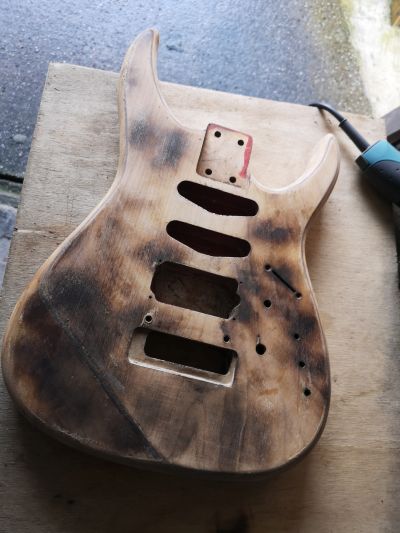
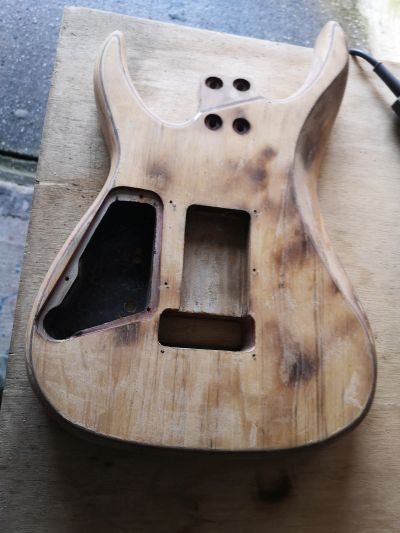
We can see here that I managed to singe the wood with the hot air gun. This could have been avoided with a bit more patience but it looks far worse than it is. If you intend to leave the guitar at wood finish though, you’ll need to be very careful not to do this!
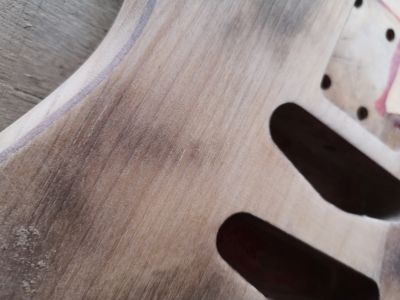
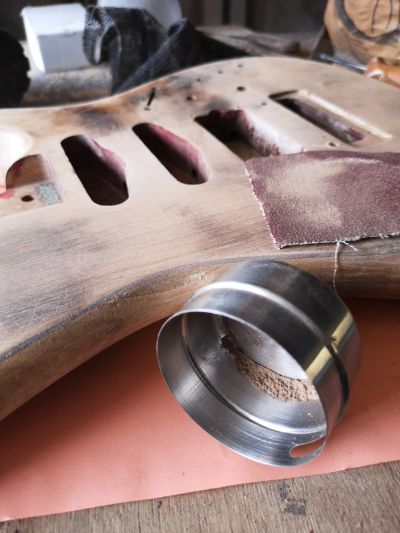

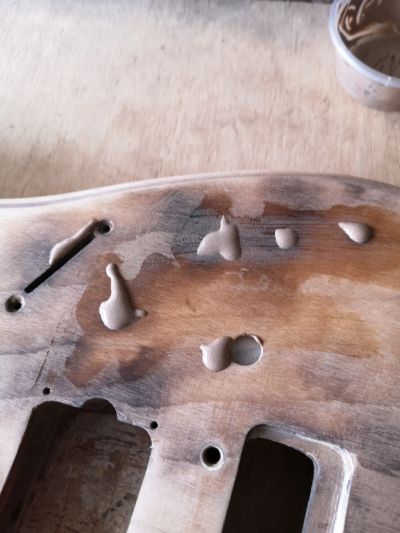
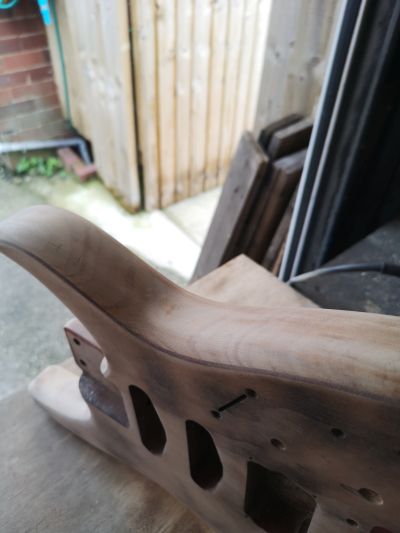
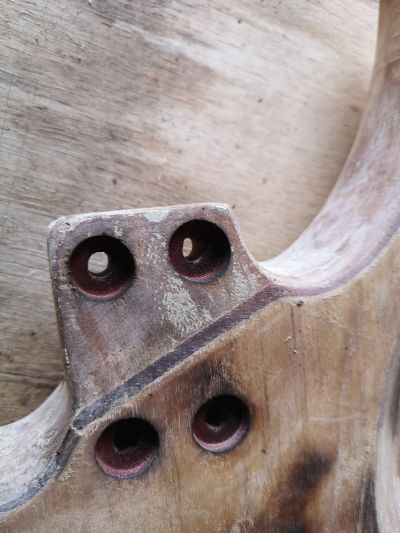
Here I confess to having got busy and not properly documenting my progress because it got very difficult.
Here’s what I learned :
- Cellulose paint takes FAR LONGER to dry than is reasonable. I mean literally months.
- Sanding even by hand takes off FAR MORE paint than is reasonable
- Putty is insufficient for filling very large dings and holes, you’ll need to use solid plugs of wood.
- Clear lacquer of any type will discolour if sprayed on too thickly.
- To get anywhere near a factory finish you’re going to need to spray, wait, and sand many times. The whole process could take a year.